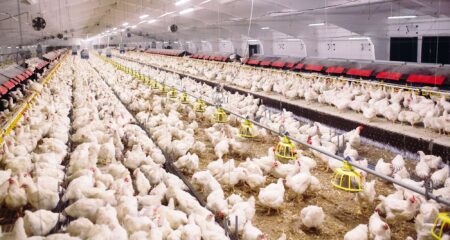A half-million-acre stretch of wilderness in western New Mexico, listed for $115 million, has new owners. The Great Western Ranch, one of the largest privately held properties in the United States, sold in July after just 10 months on the market — an unusually quick turnaround for a property of its scale.
This gives you a better sense of what that looks like:
- 504,801 acres
- 790 square miles
- 70 miles from east to west
- 29 miles from north to south
- 76% the size of Rhode Island
The Great Western Ranch is located outside Quemado, near the Arizona border, and about 150 miles west of Albuquerque.
Sellers
The ranch was previously owned by D.R. Horton, the late Texas-based homebuilding magnate. Following Horton’s passing, his family chose to divest properties outside Texas, including the ranch.
Jeff Buerger, partner with Hall and Hall, who represented the seller, had a personal stake in the transaction. He also handled the sale in 2014 when Horton first purchased the property. Buerger estimates he’s been to the ranch 25 times and describes it as an incredibly diverse property that is “magical.”
Buerger said interest in the ranch was strong, with seven showings before it sold in just 10 months — far faster than the typical 18–24 months most listings at his firm take. He sees the swift sale as a sign of a robust market. “There’s a small pool of buyers who can take on a property of this scale — and they know they have to move quickly when one becomes available,” he said.
Hall and Hall
Buyers
Although listed at $115 million, the final sale price and buyer’s identity have not been disclosed.
According to a release on Hall and Hall’s website, Dax Hayden, managing partner with Hayden Outdoors, represented the buyer.
“The sale of the Great Western Ranch represents a significant event in the world of large land holdings,” Hayden said. “Our client is deeply committed to preserving the natural integrity and ecological health of this incredible property. The existing conservation efforts and the ranch’s rich biodiversity were key attractions, and the new ownership looks forward to building upon that legacy.”
Hall and Hall
What Makes the Land Unique
The sheer size of the ranch is one factor. But Buerger said, “It’s more than just land; it’s a living testament to generations of thoughtful management. Its importance for wildlife, particularly bull elk, mule deer, and antelope, as well as its historical significance, cannot be overstated.”
The land is located in the heart of one of the most productive big game and livestock grazing regions in the western United States.
The ranch has several income sources thanks to its location. According to Hall and Hall, the ranch will support one of the largest livestock operations in the country. In addition to that, it participates in a lease arrangement with Black Mountain Outfitters, a business that takes hunters on high-end, guided trips through the property.
But its real value could be tied to something else: There aren’t many places like this anywhere in the country.
Hall and Hall
Legacy Ranches and Their Appeal
Eric O’Keefe, editor of The Land Report and the magazine American Landowner, writes about some of the biggest land transactions in the country. He explains how a property of this size and price was able to sell in such a short amount of time.
“Investors continue to be drawn to legacy ranches, especially those with one-of-a-kind attributes such as the half-million-acre Great Western Ranch, which was brought to market, went to contract, and sold in less than a year,” O’Keefe said.
You won’t find the term “legacy ranch” in a dictionary, but O’Keefe describes it like this:
“Think of a legacy ranch as a local or even regional landmark. It has history. It has significance. It has a story. Quite often legacy ranches tie to a specific family. In some instances, they were pioneers or homesteaders. Others might have a more recent tenure. But they are always seen as shepherding the ranch: for decades, generations, and even centuries.”
Buerger sums up the value of this unique property. “The Great Western Ranch presents a rare opportunity to acquire an exceptionally well-diversified income-generating, multi-dimensional land asset class, where its value is directly tethered to its rarity and its inability to be replicated.”
Property Features
Water
- 86 operational wells (solar and electric)
- Hundreds of dirt tanks, catch ponds, seasonal playas, small lakes, stock tanks
Fencing
- 2,230 miles of fencing
- 134 individual sections of pasture
Infrastructure
- Internal roads that reach remote parts of the ranch
- Housing
- Ranch outbuildings
Property History
Thought to be ancestors of the modern Pueblo Indians, the Anasazi (or Ancient Ones) inhabited the Four Corners country of southern Utah, southwestern Colorado, northwestern New Mexico, and northern Arizona from A.D. 200–A.D. 1300. They left behind a heavy accumulation of house remains and debris, according to the Utah History Encyclopedia.
The ranch has historical and archaeological sites, including Anasazi petroglyphs, ruins, and the tumbled-down stone homes and corrals of New Mexico’s earliest homesteaders.
Hall and Hall
Produced in partnership with American Farmland Owner (AFO). AFO aims to help landowners make informed decisions for their farmland while ensuring the prosperity of American agriculture.


:max_bytes(150000):strip_icc()/IMG_1591-2048x1365-362687ca596f4814967abffff2b4be2c.jpg)
:max_bytes(150000):strip_icc()/SuccessfulFarmingShareImage-8fed6410b43147a19ed5ea1e3243227f.png)



:max_bytes(150000):strip_icc()/great-western-ranch-main-57fa18291813458f8e733b30dcfec133.jpg)

:max_bytes(150000):strip_icc()/IMG_7575-ac6db3006a2145109bcc2df421c7a962.jpeg)

:max_bytes(150000):strip_icc()/Markets-3-Corn-up-3-19bdbeee0041452db8bce0a0f1c8b883.jpeg)